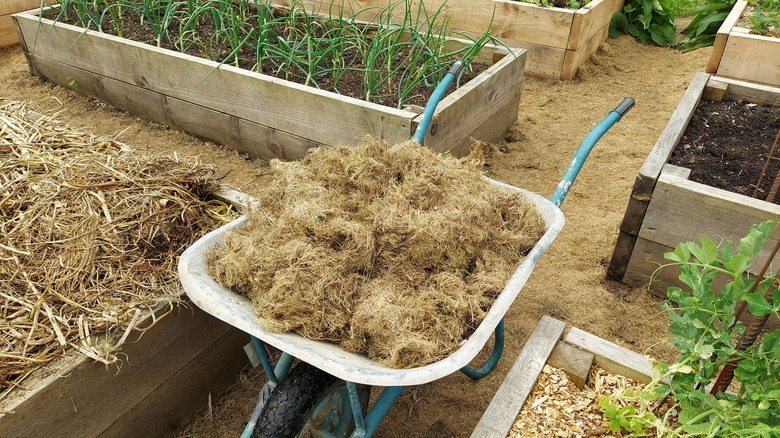The Correct Distance Between Garden Beds Makes Jobs So Much Easier
Planning and building a raised bed garden can be a major undertaking. There are numerous things to consider for your garden's long-term success. You need to choose the best location for optimal sunlight, select the materials to use for building the beds, determine the type of soil to use for filling them, select the watering system to use, and consider many other factors. It may seem like every time you think you have it all planned out, you read about something else you never considered. One thing that's easy to overlook in the midst of deciding what to grow and where everything will be is the accessibility of your raised beds. Of course, spacing your beds so you can walk between them is crucial, but there's one more thing you need to plan for in your raised bed garden — leaving enough space between each bed for a wheelbarrow.
There's nothing more frustrating than spending hours or days and hundreds of dollars to build and fill your raised beds, only to find that you can't access all areas of them. Not leaving enough space between raised beds to maneuver a wheelbarrow can make tasks like hauling soil, compost, and tools more difficult than they otherwise would be. Planning for wheelbarrow space can also make large harvests much easier. Also, if you have enough space for a wheelbarrow, that means you have enough space for others to help out without tripping over each other.
How much space do you need between your raised beds?
When planning the bed spacing in your garden, several factors should be considered. As mentioned above, the width of your wheelbarrow should be taken into account. Wheelbarrow width measurements range from 23 inches for the smaller models to over 30 inches for the heavy-duty varieties. The size of the wheelbarrow you need for your garden depends on what you will be using it for. For simple tasks, like hauling plants and produce, a small wheelbarrow will suffice. If you plan on using it to haul concrete stepping stones for a walkway or reinforcing a bed wall, it may be better to invest in a heavy-duty wheelbarrow.
However you decide to choose your perfect wheelbarrow, measure the width and consider if you want to be able to pivot its direction between garden beds. If your beds don't have an exit on both sides, you'll have to pull it out backwards. Since pushing a wheelbarrow is easier than pulling and helps prevent tipping, factoring in turning room may be a good idea. If you decide you want to be able to turn the wheelbarrow around between your raised beds, a safe measurement would be from the tip of the wheelbarrow's handles to the far end of its bucket. Even if you don't currently plan on using a wheelbarrow between your beds, you may in the future, so it's a good idea to go ahead and reserve that space.

